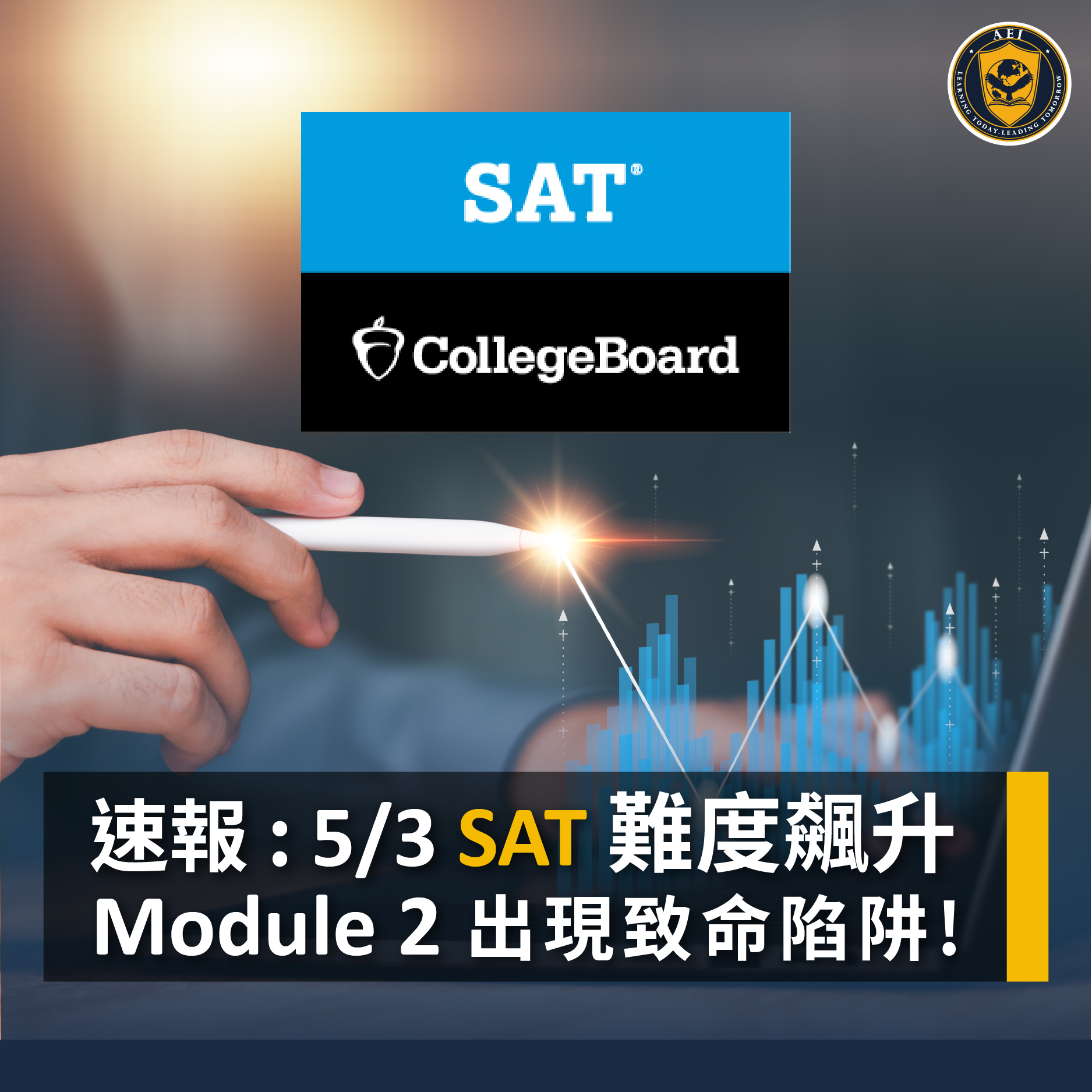Advanced Placement (AP) physics courses allow all high school students to delve deeply into the fascinating world of physics while earning advanced placement credits.
AP Physics has the following four courses: AP Physics 1 (Physics 1), AP Physics 2 (Physics 2), AP Physics C: Mechanics (Mechanics), and AP Physics C: Electricity and Magnetism (E&M, Electromagnetics), and each A course covers different content and levels of difficulty.
In this article, the content of the four courses and the recommended order of practice will be introduced.
➤AP Physics 1
AP Physics 1 introduces basic physics concepts and principles and is often considered the introductory course to AP Physics. The syllabus covers mechanics: Kinematics, Dynamics, Energy, Momentum and Rotational Motion.
AP Physics 1 focuses on the practical application of course concepts to develop students' critical thinking and problem-solving abilities.
AP Physics 1 is the introductory brick for many students to enter the field of AP Physics, and this course attaches great importance to conceptual understanding rather than problem calculation. Interestingly, AP Physics 1 is the most difficult item to get a perfect score of five among all AP subjects every year.
But this does not mean that it is the most difficult (in terms of content, it is the easiest!), and the reasons for this have been discussed in the previous article "AP Physics 1 – A Devil in Disguise".
➤AP Physics 2
Building on the foundation of AP Physics 1, AP Physics 2 explores the following concepts in greater depth: Fluid Dynamics, Thermodynamics, Electric Circuits, Magnetism, and Optics.
Some modern physics are also within this scope, such as Quantum Mechanics and Nuclear Physics.
Compared with AP Physics 1, this course will explore more complex situations and phenomena and focus on more rigorous and rigorous multi-step operations.
It is important to note here that some chapters of AP Physics 1 (such as dynamics, circular motion, etc.) are prerequisite knowledge before entering AP Physics 2. Some schools will not spend too much time reviewing these contents.
Therefore, students taking AP Physics 2 directly are strongly encouraged to take the time to review these units before taking the course, if necessary.
➤AP Physics C
AP Physics C consists of two separate AP courses. Some students will complete AP Physics C: Mechanics and AP Physics C: Electricity and Magnetism (E&M, Electromagnetism) within one academic year of school, which means that students can obtain two AP course certificates within one academic year. .
It sounds very attractive, but it is important to note that it is also notoriously difficult and has the title of "the most difficult AP exam subject." Generally speaking, students who have completed AP Physics 1 or AP Physics 2 can enter any AP Physics C course.
If you want to enter this course, calculus is an important preparatory subject. Students must complete a calculus course (strongly recommended) or take it concurrently with an AP course in order to successfully complete the AP Physics C course.
➤AP Physics C: Mechanics
AP Physics C: Mechanics is a calculus-based course focused solely on mechanics (similar to AP Physics 1).
Topics it covers include: Kinematics, Newtonian Mechanics, Work, Energy, Momentum, Circular Motion, Simple Harmonic Motion.
The depth and rigor of this course are far greater than AP Physics 1 and 2, making it very suitable for students who have strong mathematical abilities or who want to apply to enter STEM-related departments at the world's top universities.
It can be noted that the teaching content of AP Physics C: Mechanics is very similar to that of AP Physics 1, but the biggest difference lies in the increased conceptual depth and complexity of the former, and even calculations across all units.
In addition, each unit of AP Physics C: Mechanics also adds challenging calculus concepts.
➤AP Physics C: Electricity and Magnetism (E&M)
AP Physics C: Mechanics is also a calculus-based course, but it focuses on the field of electromagnetism and explores related chapters in depth. For example, Electrostatics, Electric Circuits, Magnetism, Electromagnetic Induction, and Electromagnetic Waves, etc.
Like AP Physics C: Mechanics, this subject requires proficiency in mathematics and will teach a more comprehensive introduction to electromagnetic principles (compared to AP Physics 2).
➤relative difficulty
In terms of difficulty, the courses can be arranged from easy to difficult: AP Physics 1 (Physics 1), AP Physics 2 (Physics 2), AP Physics C: Mechanics (Mechanics), and AP Physics C: Electricity and Magnetism ( E&M, Electromagnetics).
The Physics C series is often considered the most challenging course due to its calculus requirements, more complex mathematical calculations, and more specialized content.
➤How should I choose AP courses?
Applies to most students:
-
Take AP Physics 1 first, which can establish students' deep foundation in mechanics so that they can improve their transition to AP Physics C later.
If you are a student who has completed advanced physics in high school and is recommended by your school teacher, you can enter AP Physics 2 directly.
-
Next, take AP Physics 2 (if you have not completed the calculus course). If you have already taken the calculus course (such as AP Calculus AB or AP Calculus BC), you can choose to enter AP Physics C directly.
-
Finally, you enter AP Physics C. Depending on the school's course schedule, you can choose to complete one AP Physics C course in one academic year or complete two courses at once.
Since each school arranges teaching Biology, Chemistry, and Physics in a different order, students may not be able to complete all AP Physics courses and exams:
If your school teaches General/Advanced Physics in Year 11:
-
Take AP Physics 1 in 12th grade. If you've already taken Calculus, going directly to AP Physics C is an option (but be sure to discuss it with your teacher first).
If your school teaches general/advanced physics in Year 9:
-
Take AP Physics 1 in 10th grade
-
Take AP Physics 2 in 11th grade
-
Take AP Physics C: Mechanics and AP Physics C: E&M in 11th grade
➤Summary T-I-M-E!
Overall, the AP Physics course provides a student-wide physics learning experience.
AP Physics 1 and 2 provide students with a broader view of physics, with varying levels of complexity, whereas AP Physics C: Mechanics and AP Physics C: E&M provide students with more in-depth subject knowledge and require sophisticated mathematical abilities (calculus ).
The selection of courses should be based on students' interests, mathematics and science level, and future goals for further education.
Whether you want to pursue a professional career in physics in the future, or want to better understand how nature works, these courses provide an exciting journey into the vast fields of physical science.






